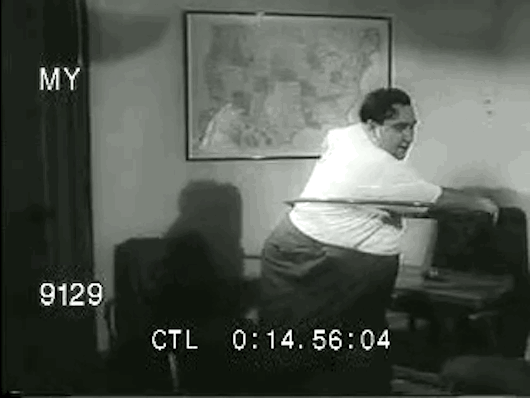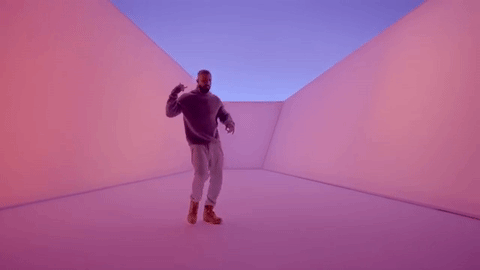What’s in a Meme?
Consider the Hula-Hoop.
In 1948, friends Arthur Melin and Richard Knerr founded a company in California to sell a slingshot that catapulted meat up to the falcons they were hunting. As a nod to the resulting sound, they called the company Wham-O. A decade later, Melin and Knerr turned their attention to a wooden hoop that children in Australia were twirling around their hips during gym class. They produced a plastic, brightly colored version and marketed it as the “Hula,” riffing off the hip-gyrating Hawaiian dance of the same name.
It was perfect timing. Broadcast television had become a household name and, by 1960, close to 90 percent of American homes had a TV. Wham-O’s Hula-Hoop had found a new mode of transmission, which sent its marketing messages faster and farther than any word-of-mouth campaign ever could. Suddenly, people didn’t need to just imagine what they could do with the toy; they could see it for themselves. In just the first four months, Wham-O had sold 25 million of its patented hoops.
An early look at the Hula Hoop craze from 1958. GIF via British Pathé on YouTube.
Wham-O’s example is important because it gives us insight into a phenomenon that pervades Internet culture today: memes and meme-making. In the final chapter of his 1976 bestseller, The Selfish Gene, Richard Dawkins coined the term “meme,” ascribing it to an idea, behavior, or style that spreads, in a non-genetic sense, within a culture, through imitation. Author and historian James Gleik added, “the meme is not the dancer but the dance.”
In Wham-O’s case, the television advertisements that broadcasted nationwide – then, worldwide – not only introduced the Hula-Hoop as a product, but also conveyed, and subsequently popularized, the idea of Hula-Hooping itself.
While Dawkins’s definition stressed gradual imitation, Internet memes evolved the idea to be altered consistently by human creativity. The goal isn’t to copy accurately, rather, to participate and deliberately revise through several iterations. Everyone brought their own unique styles to Hula-Hooping, and that’s what fueled the craze.
Now take, for example, the ALS Ice Bucket Challenge, which set social media on fire in the summer of 2014, garnering 17 million challenge video uploads on Facebook and raising $115 million. The premise was simple: participants dumped a bucket of water over their heads and nominated friends or family to do the same, sharing their videos on various social media. The campaign aimed to raise awareness and funds for ALS (amyotrophic lateral sclerosis) – or, Lou Gehrig’s Disease – and received attention from audiences ranging from sports teams to entrepreneurs to Oprah.
The Foo Fighters gave an elaborate response when Zac Brown Band nominated them for the Ice Bucket Challenge
What worked was the framework that the ALS Association gave its audience: clear direction on what to do and how to do it. The idea was simple, social, sharable, and for a good cause. And the participants tuned in and made it their own: at times, jumping into ice water, using the assistance of pulleys and friends – adding their own voice to a larger call to action.
While not every piece of potentially viral content needs to check all the boxes the Ice Bucket Challenge did, there is a salient feature that emerges from people’s reaction to it – and to other viral content. The growth and versatility of social media situates us as participants in everything we read and watch online.
More and more, social media platforms like Facebook, Snapchat, and Instagram have the ability to reach us at different points in our lives – whether we’re celebrating, upset, inspired, or anxious. It also equips us with the tools to package our feelings towards the world: in statuses, photo albums, comment sections, ‘grams, and Snaps. To share a story is to take ownership of it. We are consumers, but also creators.
In the context of digital marketing, successful content is increasingly defined by the attention it receives. Memes, here, work as frameworks that invite people to engage and leave their mark, without having to completely start afresh. Facebook’s recent holiday-themed ‘Year In Review’ feature was successful because of this very reason. Nostalgia, like humor, is a social emotion. Allowing pockets of space for its users to express this encouraged many of them to try the feature out, ultimately also re-establishing Facebook has a place for sharable moments and experiences.
Considering how potent these frameworks can be for creating widely shared content, it’s no surprise that marketers have jumped on the bandwagon with various iterations of user-generated content, community engagement, and calls to action. Remaining relevant has become a top priority for most brands – especially with younger audiences – but that doesn’t mean walking in late to the party, shouting “Damn Daniel!” and expecting to be heard.
Audiences are increasingly aware of brands superficially plugging themselves into a cultural moment to gain eyeballs. As brands like Taco Bell have exemplified through their social media presence, an authentic engagement with your audience’s interests is what really creates an impact. On the Internet and on social media – a great equalizer and a perfect incubator for ‘meme-able’ content – it’s less about how big the splash is and more about how far the ripples travel.
Drake’s Hotline Bling was created to be memed
For marketers, embracing memes and viral content means embracing their ephemerality as well. As in golf, soccer, and tennis, the objective is to launch the ball in an effective and focused manner, not for the ball to travel forever. This is where brands leverage platforms like Twitter and Snapchat, where content is being created every minute. In 2009, the arrival of the Retweet button gave users, industry experts, and brands a framework to not just share others’ tweets but to add their own thoughts as well. Snapchat’s Live Stories are performing a similar trick, by creating room for its users to express themselves within the context of, say, the Olympic Games or New Year’s Eve.
Hotline Bling meme via Giphy
Making memes is making content with intention – to share and amuse, rather than simply record. The ability of these meme-able frameworks to accommodate the experience of a large audience is what dictates its longevity, and the velocity with which it is shared. The idea comes down to exercising creativity using a preexisting scaffolding, of communally building towards something. Memes get our attention because they include us. Just how a plastic toy hoop got the world shaking its hips.
Varun Nayar, Editor.









